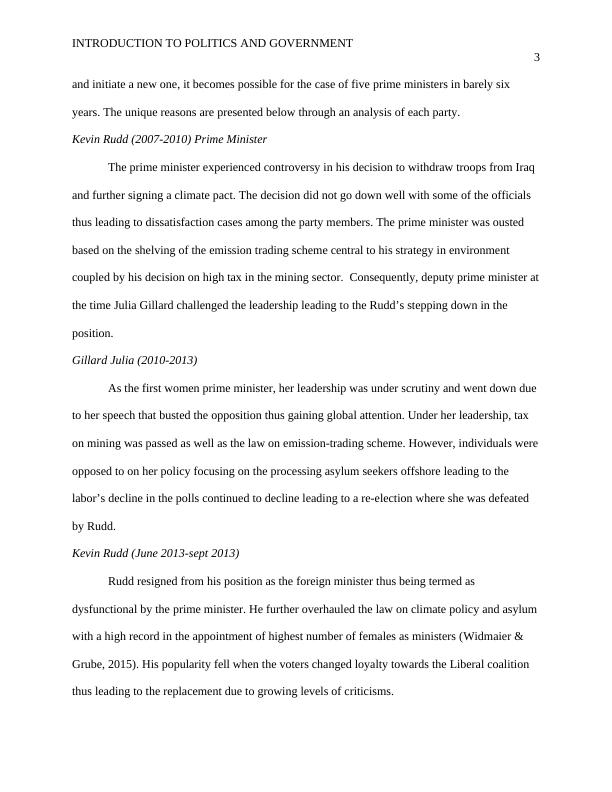Changes in Prime Minister Position in Australia: Analysis and Effects
An essay writing seminar for the course Introduction to Politics and Government, where students are expected to understand the concept of an essay, develop essay skills, and follow the rules of essay writing. The seminar also includes an essay marking rubric for evaluation purposes.
9 Pages2494 Words221 Views
Added on 2023-06-13
About This Document
This article analyzes the changes in the prime minister position in Australia since 2010 and their effects on the government and politics. It also discusses the reasons for individual changes of prime ministers and the power dynamics in the Australian government.
Changes in Prime Minister Position in Australia: Analysis and Effects
An essay writing seminar for the course Introduction to Politics and Government, where students are expected to understand the concept of an essay, develop essay skills, and follow the rules of essay writing. The seminar also includes an essay marking rubric for evaluation purposes.
Added on 2023-06-13
ShareRelated Documents
End of preview
Want to access all the pages? Upload your documents or become a member.
Impact of Change in Prime Ministers in Australia
|9
|2456
|363
Frequent Changes in Australian Prime Ministers: An Analysis
|6
|1554
|185
Factors Contributing to the Change of Prime Ministers in Australia in the Last Decade
|9
|2714
|456
Introduction to Politics and Government
|9
|2460
|492
Australian Changing Dynamics
|9
|2256
|460
Achievements of Turnbull Government of Australia
|9
|2717
|254



